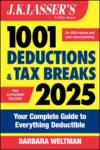Getting Ready to Prepare Your 2020 Federal Income Tax Return
Whether you prepare your return yourself (on paper or electronically) or use a paid preparer, you need information to input. Hopefully, you’ve kept great records throughout the year to simplify your data collection at this time. But if you haven’t, don’t despair; there are many ways to gather the information you need for your tax return. And there are ways in which you can simplify your return preparation duties. Here are some suggestions:
W-2s and 1099s
You should have received these information returns from payors (e.g., your employer; companies for which you performed non-employee services) by February 1, 2021. Other payors, such as banks, brokerage firms, and mutual fund companies may provide their information returns to you at a later date. For those who were unemployed in 2020, look for Form 1099-G issued by the state that paid benefits. Make sure the amount is correct—there’s been a lot of fraud—and if there are errors, contact the state to obtain a revised form.
You can simplify data entry on your tax return by obtaining the information electronically. For example, if you self-prepare your return using tax preparation software, you are able to retrieve W-2 information as long as your employer offers this option (typically large employers do but small employers do not). Similarly, the software allows you to access electronically your 1099s from brokerage firms so that all income and transactions are automatically recorded on your return; no manual entries are required.
Medical expenses
If you plan to itemize but don’t have all the receipts for your out-of-pocket medical expenses, consider:
- Contacting your doctors to ask for a printout of your payments.
- Ask your pharmacies for documentation. For example, at CVS.com you can sign up for prescription access and then receive your prescription history.
Note: It’s up to you to make sure that you deduct only costs that have not been reimbursed by insurance or covered by tax-free withdrawals from a medical FSA or health savings account.
If you have coverage through the government marketplace, you should receive Form 1095-A. The information on this form is used to compute the premium tax credit or reconcile any advanced credit with the benefit you already received.
Charitable contributions
You must have written acknowledgments for any donations of $250 or more by the time you file your return. If you don’t have them, simply ask the charity for this documentation. This is necessary whether you claim the standard deduction and deduct up to $300 in cash contributions to charity in 2020 (as an “above-the-line” deduction) or you itemize your charitable contributions.
For smaller donations, look over your check register and credit card statements to remind you of donations. Keep copies of checks and credit card statements with your return.
Other income and payments
Gather other information returns reporting income and payments. The following is a brief sampling of such information returns.
For income items, look for:
- Form 1099-R for distributions from qualified retirement plans and IRAs
- Form 1099-C for cancellation of debt
Note: Receipt of information about these income items does not mean they are fully or even partially taxable. Special rules may be used for reporting…or not reporting…such income.
For payments that may be deductible or entitle you to a tax credit, look for:
- Form 1098 for mortgage interest
- Form 1098-T for tuition payments
Note: Again, the receipt of information about these payments does not mean they are fully or even partially deductible or qualify for a tax credit. Check the IRS instructions for these items.
Don’t remember the amount of your real estate taxes or other deductible items? Contact the party to which you made payment and ask for a statement. Often these can be emailed to you.
Last year’s return
You can’t simply enter numbers from last year’s return on the current tax return. But you can look over last year’s return to remind you of items that may otherwise be overlooked. Check for:
- Interest and dividend payors (unless you input your 1099 information for 2020 electronically)
- Charitable organizations so you don’t overlook contributions you might have made
Conclusion
Preparing a tax return or getting information together for a paid preparer can be daunting and time consuming. Anything you can take to simplify the process and save time is always helpful. Remember, the deadline for 2020 IRA contributions is April 15, 2021; the deadline for 2021 contributions is April 18, 2022 (the 15th is a holiday).



